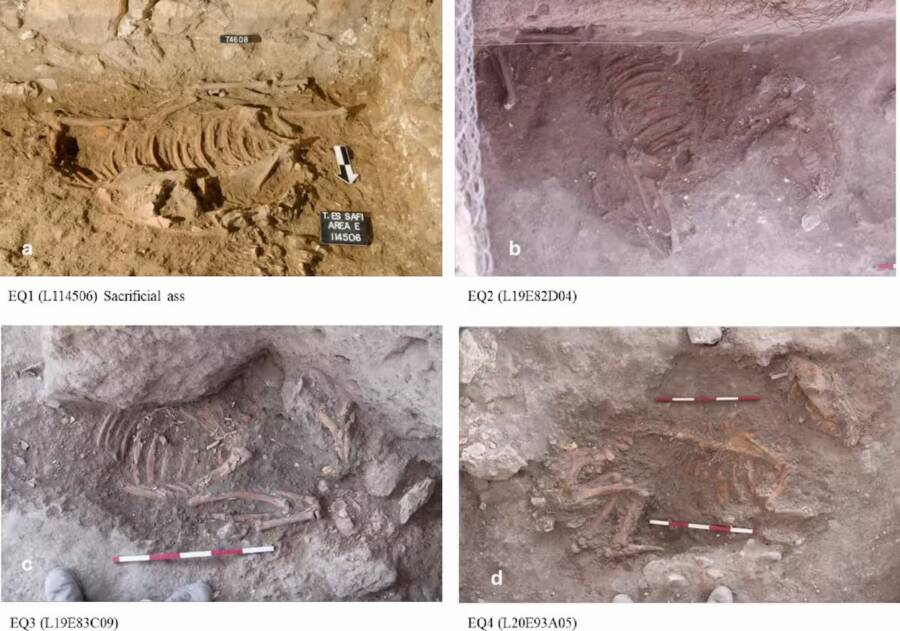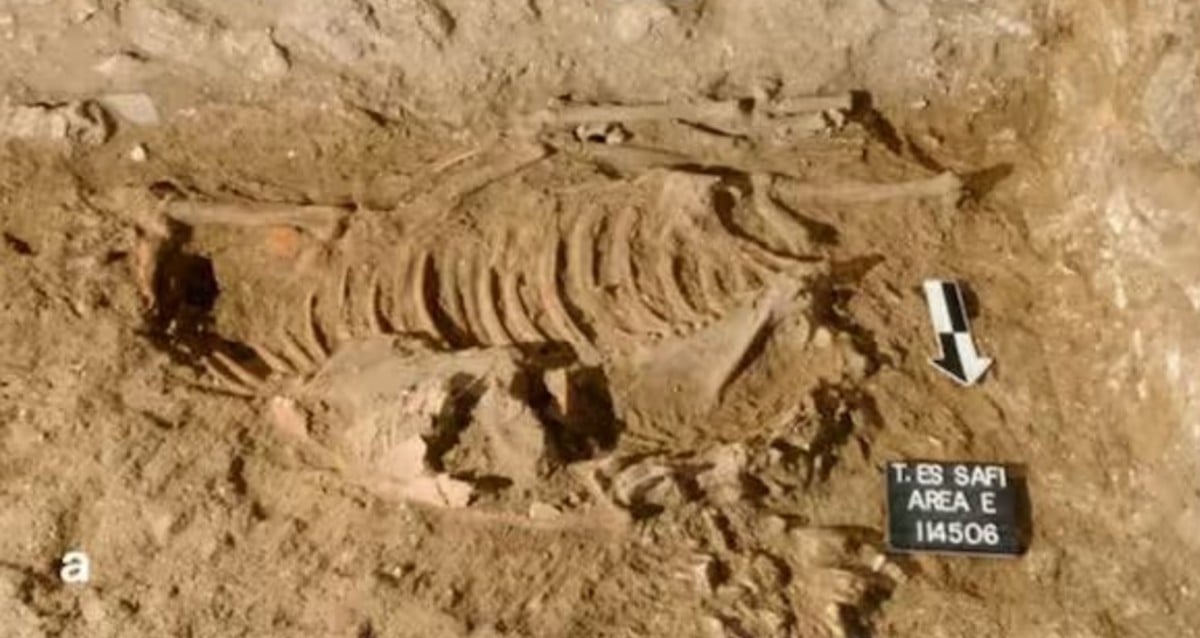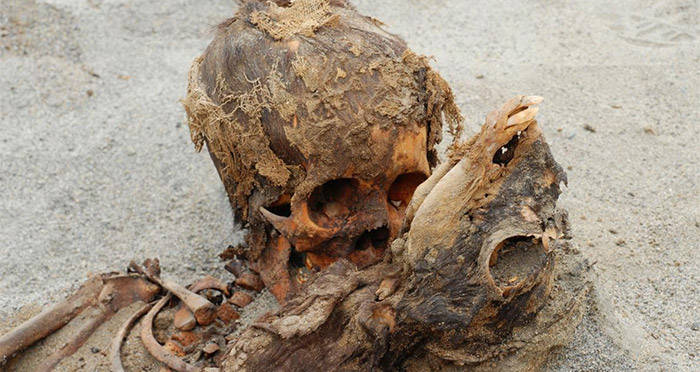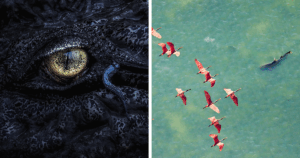Ancient Ritual Uncovered: Four Donkeys Buried 4,500 Years Ago Beneath Canaanite Ruins Spark Chilling Mysteries
The Bronze Age Donkey Sacrifice Uncovered At The Ruins Of Gath
According to a recent study published in PLOS One, the complete remains of four female donkeys were found beneath a 4,500-year-old house in Gath, an ancient Canaanite city located in present-day Tell es-Sâfi, Israel.

E.R. Arnold et al.The donkeys were all buried in a similar manner beneath the house.
The four donkeys, young and healthy at the time of their death, were buried in shallow pits beneath the ancient home with their heads facing toward the east. Three were found with their legs bound, and one had been decapitated, with its head placed on its abdomen. Upon closer inspection of their remains, researchers also found that the four female donkeys were distinctly different from other donkeys in the area.
By studying the donkeys’ teeth, researchers found that the animals had originally come from the Nile Valley in Egypt. A chemical analysis indicated that they had been raised consuming water and grasses found near the Nile, and their strontium levels matched Egyptian soil. By contrast, the remains of local donkeys suggested that they had grazed on Israeli plants and grasses.
Researchers also found that local donkeys had been discarded as waste, whereas the four Egyptian donkeys were buried with obvious care beneath the house. Thus, it seems highly likely that donkeys beneath the house were purposefully imported from Egypt, and then ritually sacrificed in Israel.
“The intentionally buried of specifically imported and highly valued young jennies,” the researchers reported, “reveal what appears to be a ritually charged characteristic when constructing domestic residences at the site.”













